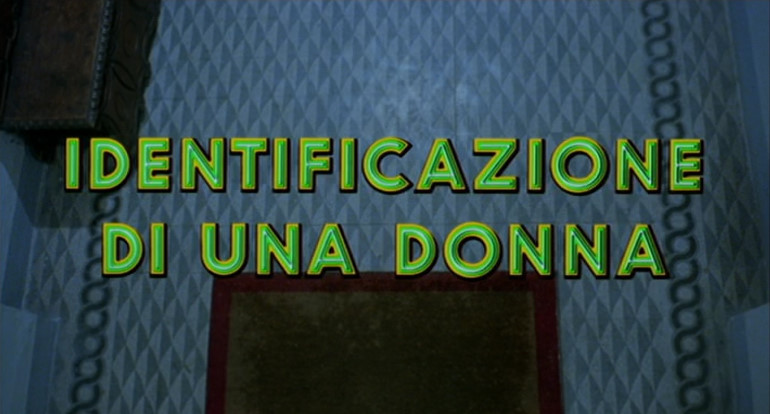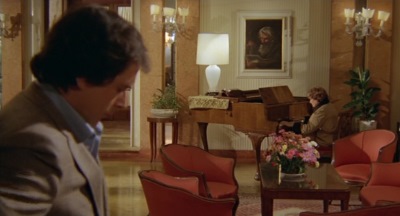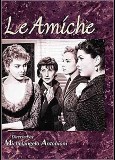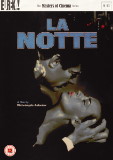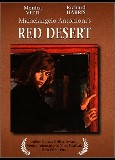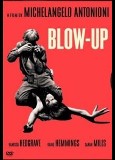| Firstly, a HUGE thanks to our Patreon supporters. Your generosity touches me deeply. These supporters have become the single biggest contributing factor to the survival of DVDBeaver. Your assistance has become essential. We are always trying to expand Patron benefits... you get access to the Silent Auctions and over 5000 unpublished screen captures (in lossless PNG format, if that has appeal for you) listed HERE. Please consider helping with $3 or more each month so we can continue to do our best in giving you timely, thorough reviews, calendar updates and detailed comparisons. Thank you so much. We aren't going to exist without another 100 or so patrons. |
![]()
![]()

![]()
![]()
|
Search DVDBeaver |
S E A R C H D V D B e a v e r |
|
|
|
|
This 1982 film by Michelangelo
Antonioni ("Identificazione di una donna") is to be released this week in
a new DVD edition, from Mr Bongo Films (available
HERE). |
|
|
And it was his first film shot in Italy, with Italian actors and themes, in some 18 years. After "Il Deserto Rosso" (1964), he made an extended series of remarkable films all shot outside of his native Italy: "Blow Up", "Zabriskie Point", "Chung Kuo", and "The Passenger". It is of great interest to see him back in his native country.
Regarding the crew for the film, he engaged Carlo di Palma as cinematographer.
di Palma had been the cinematographer for both "Blow
Up" and "Il
Deserto Rosso",
and was duly acknowledged for his work in both pictures. His work in IOAW is up
to the same level, and new means of lighting, for example, are used to uniquely
convey Antonioni's message. And, while Antonioni had a hand in the editing of
all 16 of his feature films, this is the only one where he is credited as the
sole editor. The cutting is important, resulting in a kind of frenetic pace to
the film. |
|
 |
Although Antonioni never had children himself, nevertheless they figure prominently in many of his films. Rosina in "Il Grido" immediately comes to mind: she has a sustained and important part throughout that film. And Valerio in "The Red Desert", who appears in a few scenes and brings on troubling thoughts in the female lead (Monica Vitti). "The Passenger" has the most scenes with children, in Africa, London, and Spain- they seem to be in the background everywhere. But in comparison, the child (Milian's nephew) in IOAW is quite special and gives us more insight about Antonioni. |
|
This child (Lucio) only appears in one scene of the film yet his presence is felt throughout: outside of some grumbling by the director, he speaks the very first words in the film; and as well he speaks the very last words.
He is a very interesting little boy of about 7 years old, very curious and intelligent, who challenges his uncle. It is only a small stretch to say that he has some resemblance to the precocious children in a J. D. Salinger short story (sadly, he died at age 16 while trying to hold his breath underwater- he was found sitting on a rock 75' below the surface). |
|
|
One will remember that in many of Antonioni's films, important developments happen on stairs. Think of "Cronaca di une amore", "Il Grido", and the last episode of "Beyond the Clouds" as just three examples. In IOAW there are two very striking incidents, both on spiral stair cases. One of these includes a truly stunning, even jaw-dropping image, something quite unique in the Antonioni cannon. |
 |
 |
|
And in many (one can argue all) of Antonioni's films, one of the very last scenes is of special power in the development of the movie, bringing it to a close. These are scenes where the audience is in rapt and silent attention. Just to point out a few: "Il Grido", the final stair climb; "L'avventura", the forgiving; "L'eclisse", the 7' montage of images; "Blow Up", the imaginary tennis game in the park; "Zabriskie Point", the explosion; and "The Passenger", the 7' continuous tracking shot. Indeed, this is part of his signature as a film director. The same is true in IOAW, the final scene in Venice, but it is a scene of more complexity than for the others. The interplay between the actors and their emotions, the "background" music, the camera movements, and even sea-gulls make up a very powerful and complex climax. The experienced Antonioni viewer will know of his love of reflections: in this scene are some of the most beautiful and meaningful in the whole body of his work ("La Notte" and "The Passenger" are two other notable examples). And we know how important music is to Antonioni: throughout the film there is original music (composed by John Foxx) which contributes greatly to the overall spirit of the film but in the final scene in a hotel in Venice, there is a woman playing a Scriabin piano sonata. It seems to fit PERFECTLY with what is happening visually. In listening to some commercial recordings of this piece, it is clear that none of these would have worked in the film, for they are played with more expression and nuance, enough so that they would disrupt the balance that Antonioni wanted to achieved in the scene. Somehow he got it played beautifully enough but not too beautifully. |
|
|
 |
|
There are other
unique features of this film: there is a scene in dense fog (another Antonioni
motif) that is on a par with the rightly heralded one in "Il
Deserto Rosso";
there is more explicit sex in this film than in any other of his films; and
there are more incidents of lighting and snuffing out of cigarettes here than
ever before, definitely contributing to the overall pace of the film. The writer is a Professor of Physics at The University of Chicago. His passion for Antonioni began in the mid 60s and has only intensified since. He has met and corresponded with Mr. and Mrs Antonioni. He has also taught two special courses at The University of Chicago on the subject "Ambiguity and the Nature of Reality in the films of Michelangelo Antonioni." |
|
Michelangelo Antonioni films on DVD (NTSC) - CLICK COVERS or REVIEW BUTTON for more information
Recommended Books for Michelangelo Antonioni reading (CLICK COVERS or TITLES for more information)
 |
 |
 |
 |
 |
 |
 |
 |
| That Bowling Alley on the Tiber: Tales of a Director by Michelangelo Antonioni |
Antonioni, Or, the Surface of the World by Seymour Chatman |
My Time With Antonioni: The Diary of an Extraordinary Experience by Wim Wenders, Michael Hofmann |
Antonioni: The Poet of Images by William Arrowsmith, Ted Perry |
Antonioni by Sam Rohdie |
The Films of Michelangelo Antonioni (Cambridge Film Classics) by Peter Brunette, Ray Carney |
Michelangelo Antonioni by Seymour Chatman, Paul Duncan |
L'Avventura (B.F.I. Film Classics) by Geoffrey Nowell-Smith |
![]()
![]()
![]()
![]()



